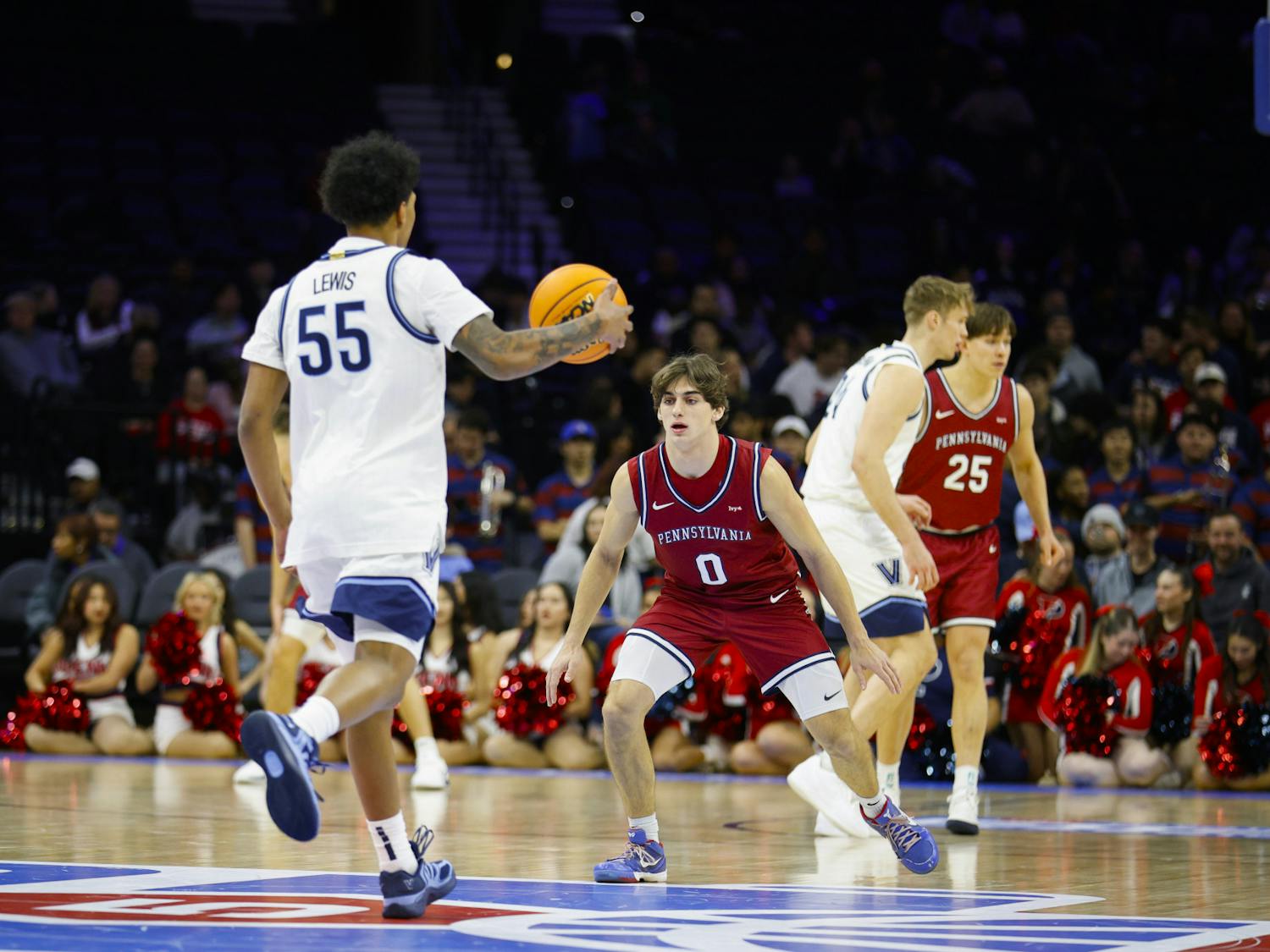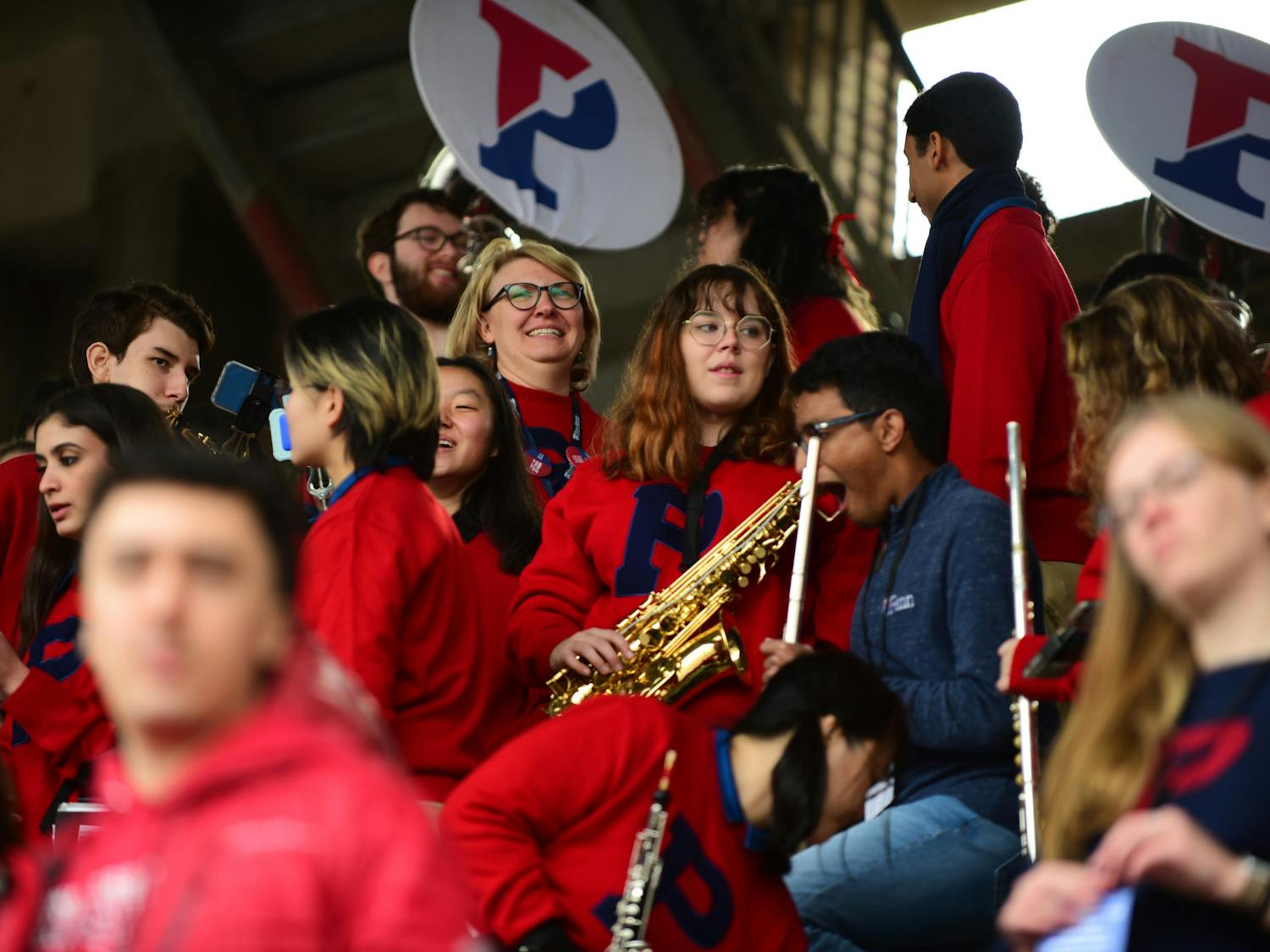When most Penn students make the walk to Franklin Field to watch a football, lacrosse or field hockey game, they may not be fully aware of its historical significance.
Besides having its stands paced by star actor Bruce Willis in the movie Unbreakable, Franklin Field is the oldest two-tiered football stadium still in use and featured the first scoreboard, the first football telecast and the first and only playoff loss by legendary coach Vince Lombardi.
But now, the stadium that first opened in 1895 for the Penn Relays has undergone a major change.
After a long decision process, renovations to replace the astroturf on Franklin Field with a variation of Sprinturf a state-of-the-art infill system comprised of a rubber and sand mixture are complete.
The renovations began in the summer and have now been completed, and the Penn football and field hockey teams have begun to practice on the new turf.
"So far, I like the new surface a lot," junior running back Sam Mathews said. "It's a lot easier to get tackled on, compared to last year's turf. You can make cuts on it too, it gives a little bit.
"I don't think it's as fast as the turf before, but I think it'll save a couple more knees. That other stuff was like concrete."
The Sprinturf "is what's going in on all of the new installments," said Dave Bryan, director of Facilities and Operations for the Penn Athletic Department. "It is softer, more user-friendly and it is more replicated to real grass."
The upgrade to Sprinturf is a more modern upgrade for the Philadelphia landmark.
AstroTurf had covered the playing surface at Franklin Field since 1970, with its fifth carpet installed in 1993. After 10 years, Bryan and other Penn Athletics officials knew it was time for a change.
"The old turf was at the end of its useful life, we even got a couple of extra years out of it," Bryan said. "We realized it was time for an upgrade, and we wanted to provide a better playing surface for our athletes."
Bryan also said that the new turf provides a surface that will reduce the risk of injuries, especially with football players.
"The new surface is great because - less injuries occur on it," Bryan said. "It provides an extra cushion that is very close to grass in that respect."
Because of its consequences on playing conditions for a variety of sports, the turf was only decided upon after a series of committee meetings organized by Penn Athletics.
The committee included Bryan, the associate athletic directors, members of the Facilities Department and coaches from Penn's lacrosse, football and field hockey teams, all of which play their home games on Franklin Field.
"We considered everybody's input, and we narrowed it down to three candidates before making the final choice," Bryan said. "We wanted to make sure everyone who would be impacted by the change had a voice in the decision-making process."
Bryan expected the new surface to be fully installed by the end of the summer, in time for the fall 2004 season. The school realized that goal, allowing the field to be used by the football and field hockey teams.
"I think any new field will be a bit different in terms of style of play," Penn field hockey coach Val Cloud said before the new field was selected. "But our girls are used to playing on fields of grass, so we're used to the ball playing slower anyway."
Also renovated this summer was the Franklin Field scoreboard. The analog clock that reads P-E-N-N-S-Y-L-V-A-N-I-A still exists, but just about everything else has changed.
The scoreboard features the new Penn Athletics logo, which is flanked by the scoreboard panel itself and a new and improved Jumbotron.
At the bottom of the scoreboard sits the name of the donor primarily responsible for the project, Robert Wolf & Family. Other sponsors include Pepsi, Office Depot, PennAthletics.com, The Philadelphia Inquirer, Peco Energy and Nike.
Bryan expects that other athletic venues will experience several more changes over the next few years, as Penn acquires the new postal lands that are expected to be developed into additional sports facilities.
For Mathews and head football coach Al Bagnoli, the next step that the Athletic Department should take in improving athletic facilities involves training facilities.
"From my perspective, the weight room" needs an upgrade, Bagnoli said. "It's not even that old, that's the scary part. It's about 10 years old. Facilities are like an arms race. Once it starts, it never ends.
"We'd like to have a 10,000 square foot weight room so all the athletes could enjoy it. So you could get a hundred athletes in there at one time."








